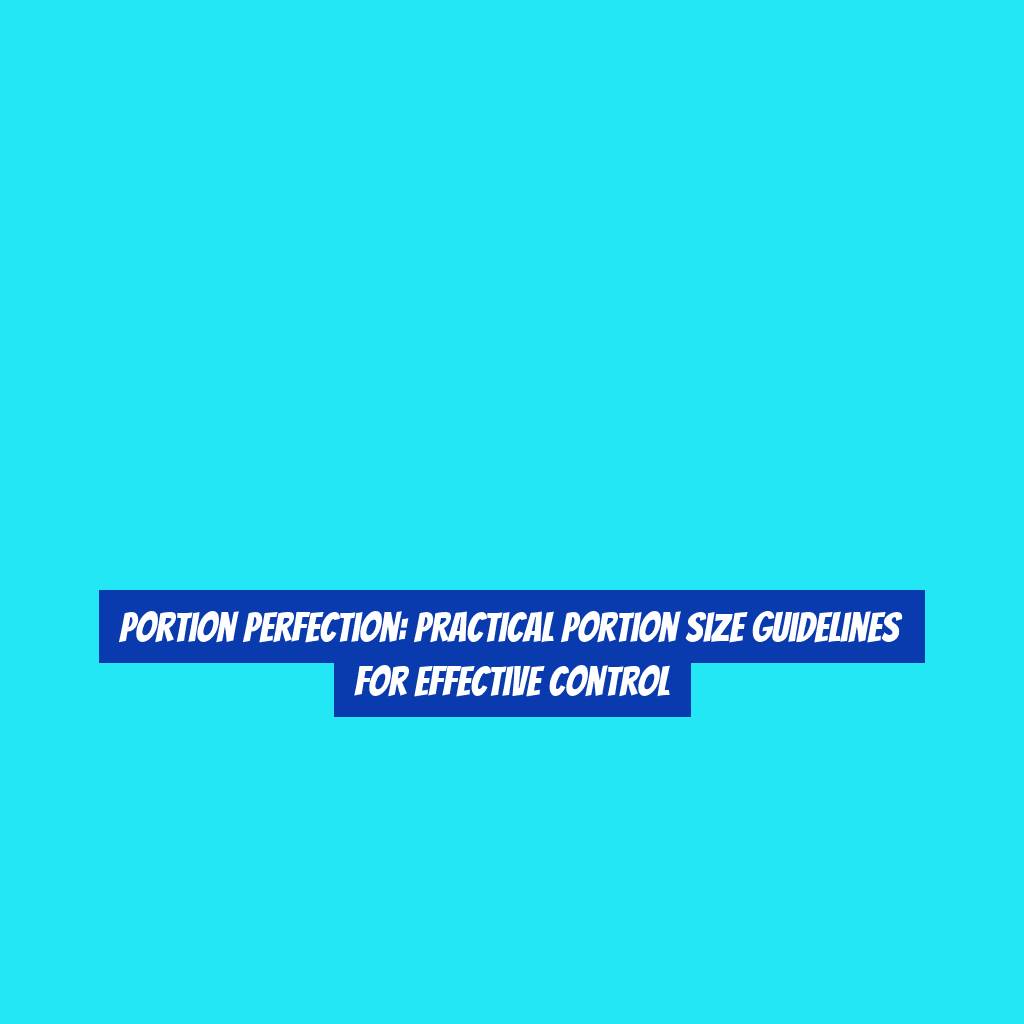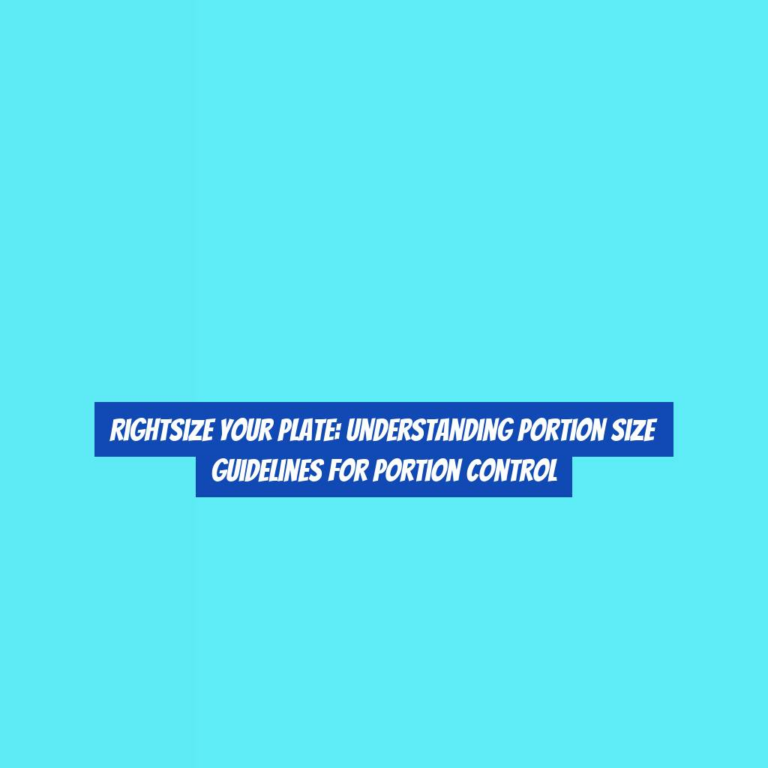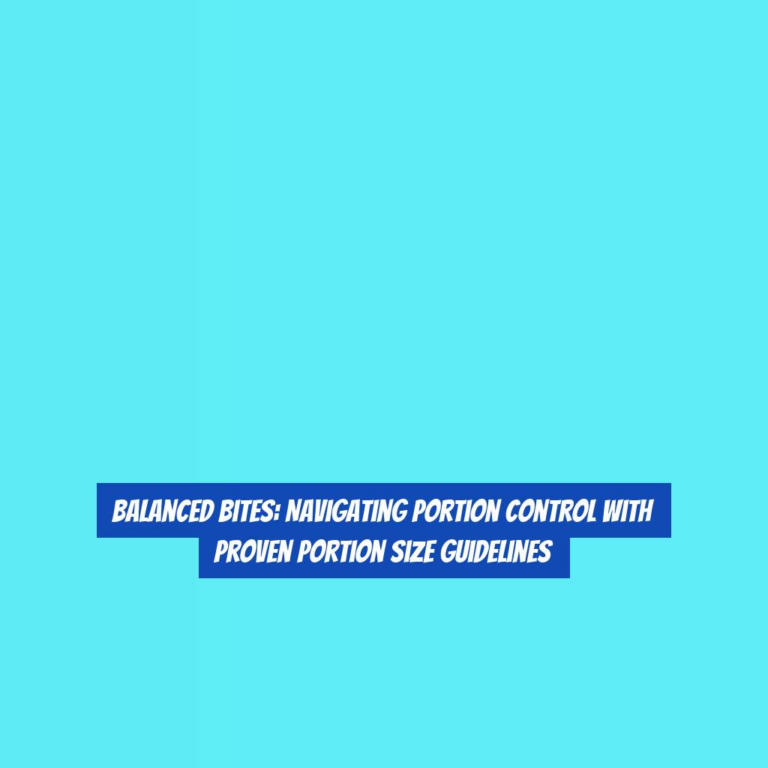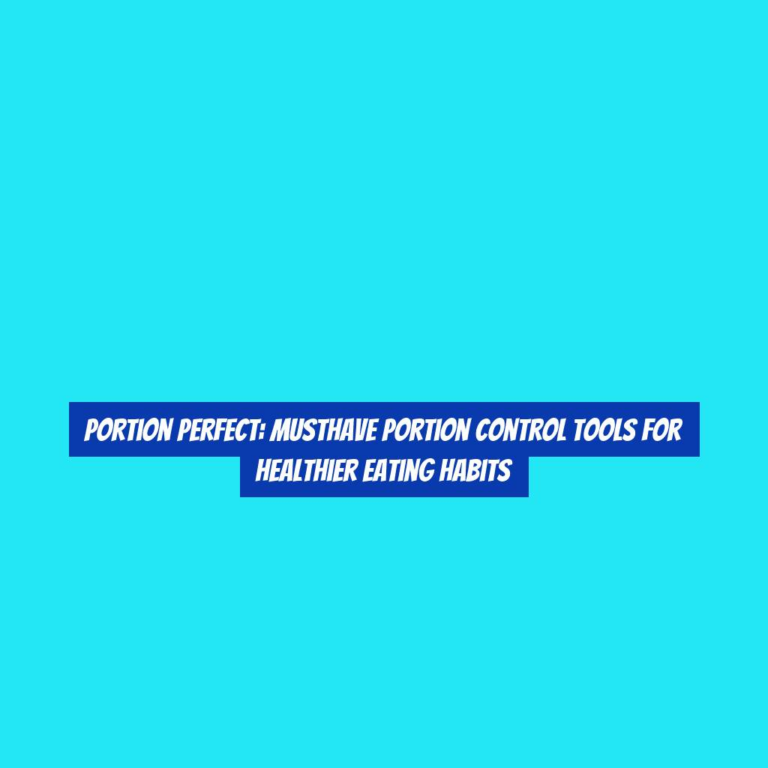Portion Perfection: Practical Portion Size Guidelines for Effective Control
If youG??ve ever felt like portion control is as elusive as trying to catch a cloud, youG??re not alone. Understanding how much to eat can seem like a guessing game, but it doesnG??t have to be.
When it comes to achieving your health and wellness goals, mastering portion sizes is a crucial piece of the puzzle. In the following discussion, weG??ll explore practical strategies and guidelines for portion perfection that can help you take control of your eating habits and ultimately, your overall well-being.
Understanding Portion Control
Are you struggling to control your portion sizes and maintain a healthy diet? Understanding portion control is crucial for achieving your health goals.
ItG??s not just about what you eat, but also how much you eat. Portion control means being mindful of the amount of food you consume, which directly impacts your calorie intake. By managing portion sizes, you can prevent overeating and maintain a balanced diet.
Start by familiarizing yourself with recommended portion sizes for different food groups. For example, a serving of meat should be about the size of a deck of cards, while a serving of pasta is about the size of a tennis ball. Additionally, using smaller plates and utensils can trick your brain into feeling satisfied with smaller portions.
Another key aspect of portion control is listening to your bodyG??s hunger and fullness cues. Eat slowly and pay attention to when you start feeling full. This can help prevent overeating and promote better digestion.
The Role of Portion Size in Weight Management
Struggling to control your portion sizes and maintain a healthy diet? Understanding the role of portion size in weight management is essential for achieving your health goals and controlling your calorie intake.
HereG??s why it matters:
-
Calorie Control: Portion sizes directly impact your calorie intake. By managing your portion sizes, you can better regulate the number of calories you consume, which is crucial for weight management.
-
Satiety and Hunger: Eating appropriate portion sizes can help you feel satisfied after meals and prevent overeating. Understanding portion control can help you manage hunger cues and avoid unnecessary snacking.
-
Mindful Eating: Being mindful of portion sizes encourages you to pay closer attention to what you eat. It promotes a healthier relationship with food and can lead to more conscious food choices.
Understanding the impact of portion size on weight management empowers you to make informed decisions about your diet. By being mindful of portion sizes, you can take charge of your calorie intake and work towards achieving your weight management goals.
Practical Tips for Portioning Your Plate
Ensuring proper portion sizes on your plate is key to maintaining a balanced diet and managing your calorie intake effectively. To make portioning your plate easier, start by using smaller plates. Research shows that using smaller plates can help you consume smaller portions without feeling deprived.
Next, mentally divide your plate into sections. Visualize filling half of your plate with vegetables, a quarter with lean protein, and the remaining quarter with whole grains or starchy vegetables. This simple trick can help you balance your meal and keep portion sizes in check.
Additionally, avoid serving dishes family-style on the table. Instead, portion out your food in the kitchen and leave the serving dishes there. This can prevent mindless overeating and make it easier to stick to appropriate portion sizes.
Portion Control for Snacking and Desserts
For better control over your snacking and dessert portions, consider using smaller bowls or plates to help limit your intake. Research has shown that smaller dishware can lead to reduced portion sizes and decreased calorie consumption.
Additionally, try these practical tips to help you better manage your snacking and dessert portions:
-
Mindful Snacking: Instead of mindlessly munching on snacks straight from the package, take a moment to portion out a serving size into a small bowl or plate. This simple act can help you become more aware of how much youG??re eating and prevent overindulgence.
-
Healthy Dessert Swaps: Opt for healthier dessert options like fruit salads, yogurt parfaits, or dark chocolate instead of calorie-laden treats. By making these swaps, you can satisfy your sweet tooth without consuming excessive amounts of sugar and fat.
-
Pre-Portioned Snack Packs: Consider pre-portioning your snacks into small baggies or containers. This can help prevent you from eating larger portions and make it easier to grab a sensible snack when hunger strikes.
Portion Perfection Beyond the Plate
Consider using portion control tools such as measuring cups, food scales, or visual cues to help you manage your food portions effectively.
Measuring cups can be particularly useful for controlling portions of grains, cereals, and liquids, ensuring that you arenG??t inadvertently consuming larger portions than intended.
Food scales are helpful for accurately measuring protein servings, fruits, and vegetables, especially when a recipe calls for a specific weight.
Visual cues, such as using your hand to estimate portion sizes, can also be an effective way to control your portions when you donG??t have access to measuring tools.
Additionally, using smaller plates and bowls can trick your mind into feeling satisfied with smaller portions, as they give the illusion of a full plate.
Another technique is to divide your plate visually, allocating half for vegetables, a quarter for lean protein, and a quarter for whole grains.
Conclusion
In conclusion, mastering portion control is essential for effective weight management. By understanding portion sizes and implementing practical tips for portioning your plate, you can take control of your eating habits and make healthier choices.
DonG??t forget to apply portion control to snacking and desserts as well. With portion perfection, you can achieve your health and wellness goals beyond just whatG??s on your plate.





